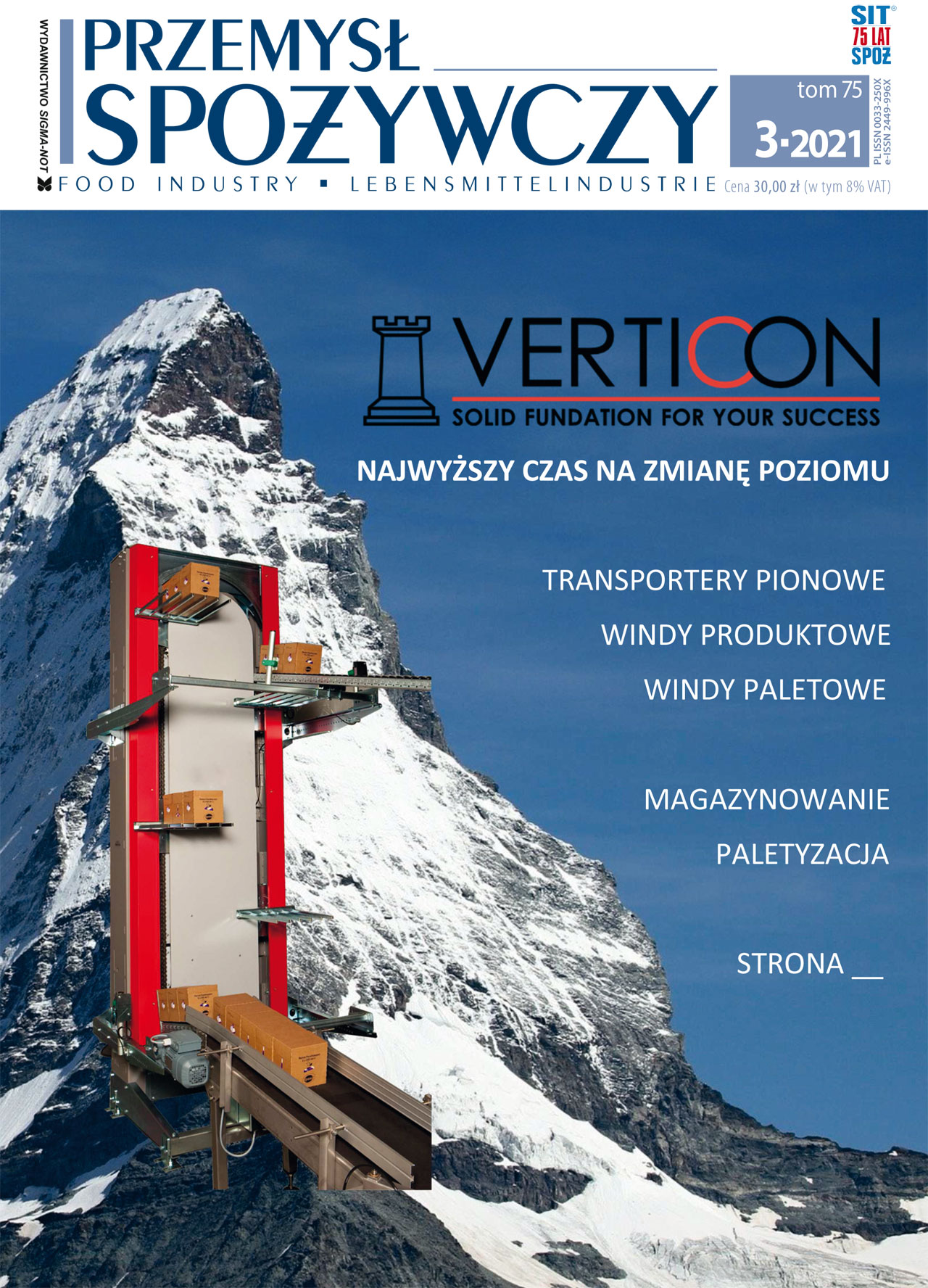ECONOMY
- 2 Food Enterprises on the Ranking List 2000 – Jadwiga Drożdż (DOI 10.15199/65.2021.3.1)
Food industry enterprises had a significant share in the turnover of companies listed on the ranking List 2000 published by Rzeczpospolita in November 2020. Sales revenues of entities from this sector accounted for approximately 12.5% of the turnover of all companies on the list, ranking second after wholesale. Among the listed food companies there were representatives of all branches of the food industry. Traditionally, the most numerous industries include meat and dairy. There were also industries whose representation was less numerous, but their turnover accounted for the majority of sales of a given type of processing (e.g. production of sugar, tobacco products, vegetable fats or beer). The economic and financial situation of listed food companies was diversified, but generally better than the average in a given industry. The percentage of deficit companies (measured both as a share in revenues and in the number of companies) listed on the List 2000 in each sector of the food industry was small.
KEY WORDS: food industry, economic and financial situation
TECHNICS– TECHNOLOGY
- 6 Innovation in The Production of Meat Products – Joanna Stadnik, Karolina Wójciak (DOI 10.15199/65.2021.3.2)
Consumers’ preferences and requirements regarding safety, sensory attractiveness and functional properties of meat and meat products generate demand for an ever wider and more modern offer of meat processing plants, tailored to the individual needs and expectations of buyers. The widespread and constantly increasing consumption of meat and meat products is an additional incentive to take action in this regard. The paper presents current information on innovations in the production of meat products. Due to the complexity of the problem, examples of measures taken to eliminate or to reduce the content of undesirable components (fat, nitrogen compounds), modification of the fatty acids profile and the use of natural antioxidants were discussed.
KEY WORDS: meat, innovations, fat, sodium nitrite, natural antioxidants
- 12 In Vitro Meat – Dilemmas of Producers and Consumers – Krzysztof Dasiewicz (DOI 10.15199/65.2021.3.3)
Cultured meat may be a novel food that would overcome the limitations of traditional meat production. In vitro produced meat is presented as a humane, safe and environmentally beneficial alternative to slaughtered meat as a source of high-value protein. However, is the concept of novel foods without flaws? Scientists and consumers have many objections to the acceptance of novel foods. The direction of further research and prospects for the future of in vitro meat production will largely depend economic issues and on consumers and lobbyists who seek legal regulation of artificial meat.
KEY WORDS: cultured meat, in vitro meat, consumer perception, problem
FOOD-FEEDING
- 20 Bee Honey in Nutrition and Health Prophylaxis – Małgorzata Dżugan, Michał Miłek, Ewelina Sidor, Monika Tomczyk (DOI 10.15199/65.2021.3.4)
Honey bee is a very popular product, known and appreciated for its health-promoting properties. In terms of its chemical composition, it is a concentrated solution of sugars (70-80%) containing 17-18% of water. The bioactivity of honey is mainly due to the occurrence of other minor components of honey, mainly polyphenolic compounds, enzymes, vitamins and minerals. The quality profile and concentration of these ingredients varies greatly depending on its botanical (variety) and geographic origin of honey. Maintaining the full activity of honey requires its proper handling during extraction, distribution and storage. Low-processed bee honey, if consumed rationally, can provide a good overall balance of the body and prevent disease.
KEY WORDS: honey, antibacterial activity, antioxidant activity, decrystallization, therapeutic properties
- 25 Current Problems of The Quality of Culinary Meat Available on Polish Market in The Opinion of Consumers – Klaudia Wojtulewicz, Tomasz Florowski, Anna Florowska (DOI 10.15199/65.2021.3.5)
One of the most important factors influencing the consumer’s decision to buy the culinary meat is its quality. The aim of the research was to determine how consumers evaluate the quality of culinary meat available on the market and what quality problems they perceive at present. The research was conducted using the questionnaire method. It was found that only a few consumers were of the opinion that the quality of the commercial culinary meat was very good. The respondents indicated, inter alia, that the meat available on the market is too hard, not tender and not juicy. Moreover, with regard to pork and poultry, consumers indicated that the problem was excessive leakage of meat juice, too light color and the presence of blood petechiae. On the other hand, according to quality of beef, the respondents pointed the problem with the presence of too dark meat. The obtained results therefore indicate that the occurrence of various defects in the quality of culinary meat is a problem perceived by consumers. It should be taken into account by meat producers in improving the quality of culinary meat
KEY WORDS: culinary meat, meat quality defects, consumer research
- 31 Seafood – A Source of Nutrients – Patrycja Biernacka, Grzegorz Tokarczyk (DOI 10.15199/65.2021.3.6)
The consumption of seafood is increasing more and more, and forecasts predict an even greater increase in the demand for this type of product. Seafood provides many nutrients that are beneficial to the consumer. These include: polyunsaturated fatty acids from the omega 3 family, including EPA and DHA, easily digestible protein and many essential elements, such as: iodine, potassium or B vitamins. However, they also contain undesirable substances present in them as a result of environmental pollution. The greatest threat is methylmercury, which is especially dangerous for pregnant women. The standard content for methylmercury is 1.6 µg / kg body weight. The major threat are also heavy metals such as cadmium or lead, as well as dioxins and their derivatives. Nevertheless, the authors of many studies prove that the benefits of consumption of seafood outweigh the potential risks.
KEY WORDS: seafood, methylmercury, nutritional values, consumer safety
MEMORY
- 35 Memory of Prof. Jan Mroczek




